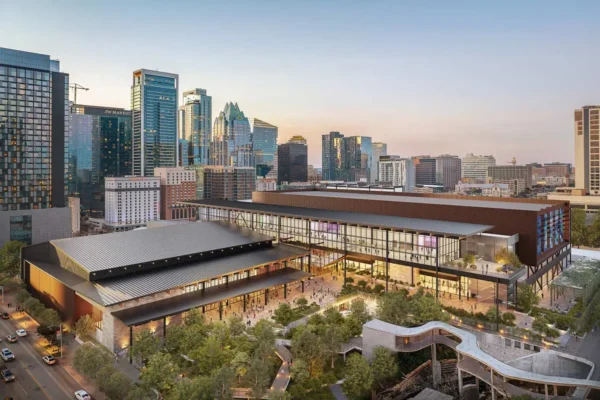Welcome back, class. For this month’s lesson, we are going to review the compelling constellation of tradeshow terminology, jargon, lingo and, yes, even slang. The world is a literary labyrinth of languages with roughly 6,500 spoken globally. Within nearly all languages, however, there are various dialects, vernaculars and colloquialisms. So, it is only fitting that in different subcultures, vocations and industries, there exists codes and idioms all their own – also known as “shoptalk.”
The tradeshow industry in particular has a propensity and reputation for reducing its typically lengthy show names and relatable terminology into acronyms and abbreviations. The following are some exhibiting “expressions” and terms to keep you in the loop when speaking to fellow trade show professionals:
• Advance Receiving – is a location set by show management to receive freight before the start of show. Freight is stored at this location and then shipped to the show at the appropriate time.
• Baffle – is a partition designed to control light, air, sound or traffic flow.
• Boneyard – is a storage area for empty crates and contractor materials.
• Build and Burn – is a booth designed and built for one-time use.
• C.I.F. (Cost, Insurance, Freight) – is a pricing term indicating these charges are included in the stated price.
• Charging Stations – are specified areas where attendees can charge various electronic devices like cell phones.
• Dead Man – is a temporary post used during installation to help support the weight of an overhead structure.
• Dead Time – is the time when a worker is unable to perform duties due to factors beyond his or her control.
• DIM Weight – is a formula based on the length x width x height divided by 194 for domestic shipments or by 166 for international shipments.
• Double-decker – is a two-storied exhibit, also known as multiple-story exhibit.
• EAC (Exhibitor Appointed Contractor) – are the outside contractors who specialize in installation and dismantling.
• Elevations – are the scaled drawings depicting front and side views of an exhibit.
• End Cap – is an exhibit space with aisles on three sides.
• Exclusive Contractor – is a contractor appointed by show management as the sole provider of services.
• Exhibitor Kit – is a package of information which contains all rules, regulations, and forms relating to an exhibition, provided to exhibitors by show management.
• Floor Marking – is the method used to mark booth spaces.
• Floor Port – is a utility box recessed in the floor containing electrical, telephone, or plumbing connections.
• Four-Hour Call – is the minimum work period for union labor.
• Hard Card – is the work order for labor or services or the drayage-contractor’s record of materials received or shipped.
• Hardwall – is a type of exhibit construction in which walls are made of a solid material, rather than fabric.
• Header – is a sign or other structure across the top of an exhibit.
• I&D – is installation and dismantle.
• Infringement – is an exhibitor’s unauthorized use of floor space outside the leased area.
• In-line – is an exhibit constructed in a continuous line along an aisle.
• Island Exhibit – is a display with aisles on four sides.
• Jigged Crate – is a special-purpose crate with hardware to secure exhibit properties in place to prevent shifting during shipping.
• K.D. (Knockdown) – is an exhibit with separate components that must be assembled on-site.
• Labor Call – is the method of securing union employees, time specified for labor to report and the minimum amount for which labor must be paid.
• Labor Desk – is the exhibit hall location where exhibitors may place orders for labor.
• Less Than Truckload (LTL) – is the rate charged for freight weighing less than the minimum weight for a truckload.
• Marshaling Yard – is a lot where trucks gather for orderly dispatch to show site.
• Modular Exhibit – is an exhibit constructed with interchangeable components designed to be set up in various arrangements and sizes.
• On-site – is a reference to the exhibit location. Also called At-site.
• On-site Order – is the floor order placed at a show site.
• Panel System – is a prefabricated exhibit composed of connected rectangular panels of various sizes.
• Peninsula Display – is an exhibit with aisles on three sides.
• Perimeter Booth – is a booth space on an outside wall.
• Pipe & Drape – is tubing covered with draped fabric to make up the rails and backwall of a tradeshow.
• Portable Exhibit – is a lightweight display unit that can be moved without a forklift.
• Prefab – is a pre-built exhibit ready for installation.
• Rail – is a low wall used to divide exhibits.
• Rental Booth – is a complete booth package offered to exhibitors on a rental basis.
• Show Services – is the company contracted by tradeshow producers to offer all services, such as carpentry, furnishings and catering.
• S.T.L. (Straight Time Labor) – is the work performed during normal work hours at the standard rate.
• Self-contained Exhibit – is a display using the shipping case as an integral part of the exhibit.
• Show Break – is the time specified for the closing an exhibition and the start of dismantling.
• Space Rate – is the cost per square foot for exhibit area.
• T & M (Time & Materials) – is a form of billing in which a consumer is charged for labor and materials.
• Teardown – is the dismantling of an exhibit.
HOMEWORK
Learn and live by the ABC’s of tradeshows
Linda Musgrove is founder and president of TradeShow Teacher, an award-winning tradeshow management and marketing firm. Linda, along with her team of specialists, focuses on assisting companies increase tradeshow ROI through a comprehensive results driven formula. As the author of “The Complete Idiot’s Guide to Trade Shows,” published by Alpha Books/Penguin Publishing, Linda also is a regular expert contributor to several industry publications and sites. Learn more at http://www.tsteacher.com and sign up for the FREE monthly Trade Show Tactics newsletter. Follow on Twitter at: http://twitter.com/tsteacher or e-mail: lmusgrove@tradeshowteacher.com






























